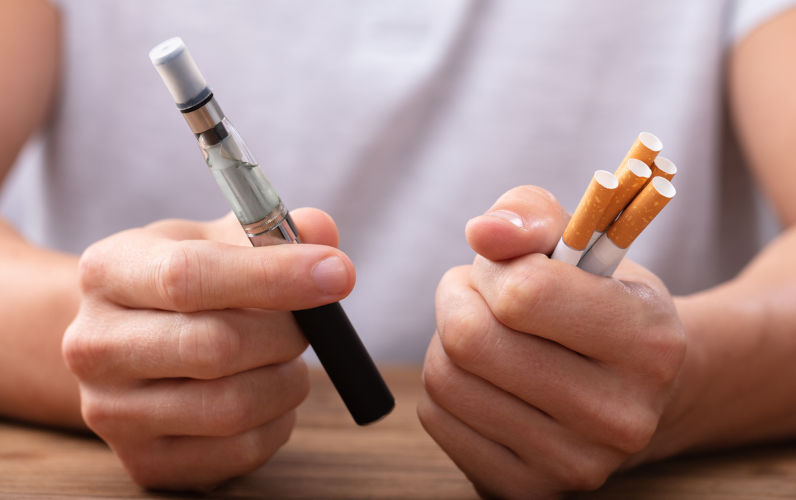E-cigarettes are not the solution to the tobacco pandemic
February 11, 2024
A landmark event in global public health is taking place in Panama City on Feb 5-10: the 10th Conference of Parties (COP10) of theWorld Health Organisation(WHO) Framework Convention on Tobacco Control (FCTC). Since 2003, the FCTC has been ratified by 183 countries, and all of them, including China, have made steady progress in monitoring tobacco use, smoke-free areas, quitting, health education, raising tobacco taxes, and bans on promotion.
China began action against tobacco in 1979. In 2013, the Party School of the Central Committee of the Communist Party of China published a major report on tobacco control in the country. In the latest 2021 report to the COP, China highlighted several areas of recent and significant achievements, including educating youth; placing responsibility for the FCTC within the National Health Commission away from industry influence; creating 20 smoke-free cities covering 10 percent of the total population; hosting an international symposium on product regulation and labelling; celebrating World No Tobacco Day; reporting that the new Healthy China Initiative 2019-30 requires extensive publicity and education on tobacco control; and taking action on cessation, tobacco advertising, promotion and sponsorship, smuggling, reducing the tobacco cultivation area and introducing alternative crops.
Yet smoking prevalence rates among Chinese men are still high at 50 percent currently claiming over 1 million deaths each year while female rates remain low at 2.1 percent.
At COP10 in Panama, China will present these most recent measures to reduce tobacco use. COP10 is the next opportunity for countries to report, compare, and encourage further action under the international obligations of the Convention.
Formal application and accreditation to attend COP are required for all nongovernment delegates, and those with tobacco industry affiliations are rejected. This is not the first time that the industry has attempted to gain access to COP, but industry activities for COP10 are of a magnitude far beyond anything previously seen.
The tobacco, vape and nicotine industries are moving to Panama City in great numbers, booking two entire hotels close to the conference site.
The WHO Convention Secretariat has even called for vigilance, noting with concern that some countries have been approached by the tobacco and other industry representatives with offers of travel and technical support, including advisers, for their government delegations for COP10. The Secretariat reminded parties that a fundamental and irreconcilable conflict exists between the tobacco industrys and public health policy interests.
Why this intense activity in Panama? The answer is round three of so-called harm reduction. The industry claimed that low-tar and filtered cigarettes were safer in earlier years. Yet neither of these claims turned out to be of any benefit in reducing harm and saving smokers lives. Round three in the harm reduction argument is that the new electronic smoking devices (ESDs), such as nicotine-heating e-cigarettes, are safer products.
For decades, the tobacco industry and its supporters have misrepresented nicotine as no riskier for most people than regularly drinking coffee, even stating there was a range of benefits, particularly for mood and concentration. This led to misleading headlines in the British weekly, The Spectator, So it might really be true nicotine is good for your brain.
Tobacco companies have promoted the supposed benefits of nicotine while minimising the fact that nicotine is addictive and harmful to health in many ways, which include an increased risk of heart, lung and gastrointestinal disorders, a decreased immune response, and effects on fatal development and on reproductive health.
ESD promotersaccuse the WHO of spreading misleading information and describe a COP10 agenda item regulating ESDs as extreme, warning of plotting, unaccountable bureaucrats,sidelining and evading democratic scrutiny. Of course, the governments, not the WHO, will make all the decisions at COP10.The tobacco, vape and nicotine industry must not be allowed to hijack or disrupt this crucial public health meeting.
The Southeast Asia Tobacco Control Alliance has voiced concern that the marketing tactics employed by the tobacco, vape and nicotine industry have contributed significantly to the appeal of ESDs to the young, with particular concern about the effects of nicotine addiction, along with the potential gateway of ESDs leading to conventional cigarette smoking. Aggressive promotion, social media influence, attractive and trendy designs, enticing flavours (such as fruit and sweets), smooth taste, and downplaying nicotine have all led to increased initiation and experimentation among young people who may not have otherwise started smoking.
The WHO is clear in concluding that ESDs are addictive and that all forms of tobacco and nicotine use are dangerous.
Along with about 40 other jurisdictions, Hong Kong and Macao have banned ESDs. There is a rise in young people using these products on the Chinese mainland, prompting authorities to introduce regulations to safeguard its young people rapidly.
Republished from the CHINA DAILY, February 7, 2024
